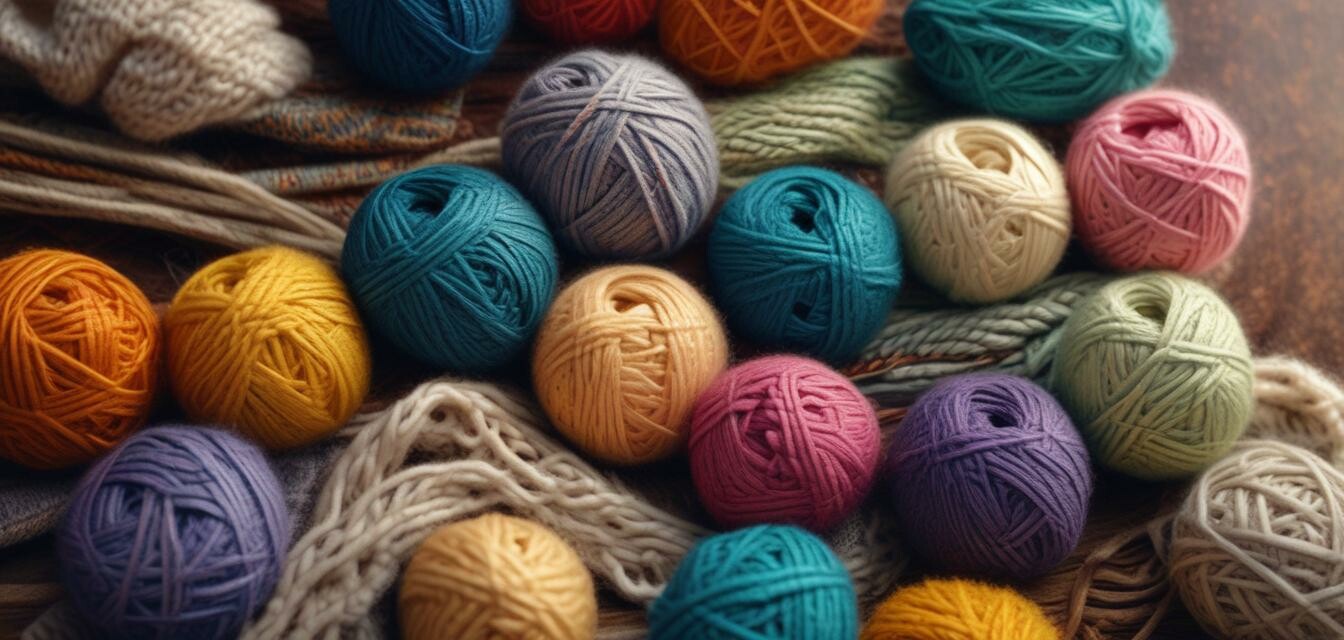
Eco-Friendly Knitting Trends for 2024
Key Takeaways
- Eco-friendly yarns made from sustainable materials are gaining popularity.
- Techniques that use minimal resources and promote zero waste are trending.
- Community-led initiatives are promoting sustainability in knitting.
- Awareness of environmental impact is driving change in consumers' choices.
As we approach 2024, the knitting community is witnessing a remarkable shift towards sustainability. Eco-friendly products and practices are becoming increasingly important to knitters, reflecting a larger global pattern of environmental consciousness. This article explores the latest trends within eco-friendly knitting, highlighting products, techniques, and community efforts that support a greener crafting experience.
The rise of sustainable yarns
The demand for eco-friendly yarns is soaring as knitters are beginning to prioritize sustainability in their material choices. Some key features of these yarns include:
| Yarn Type | Material | Sustainability Aspect |
|---|---|---|
| Bamboo yarn | Derived from bamboo grass | Fast-growing and requires less water |
| Organic cotton | Grown without synthetic pesticides | Supports healthier farming practices |
| Recycled yarn | Made from reclaimed fibers | Reduces waste by reusing materials |
| Hemp yarn | Extracted from hemp plant fibers | Durable and environmentally friendly |
Exploring natural dye techniques
Another trend gaining traction is the use of natural dyes in the yarn dyeing process. This not only enhances sustainability but also offers a beautiful array of colors derived from plants, fruits, and vegetables. Here are some examples of natural dyes:
- Indigo from the indigo plant
- Turmeric for vibrant yellow hues
- Avocado pits for soft pink tones
- Onion skins for warm, earthy shades
Zero waste techniques
Techniques that focus on reducing waste are becoming essential in the eco-friendly knitting movement. Knitters are embracing strategies such as:
- Using up leftovers to create patchwork designs.
- Adopting designs that minimize leftover yarn.
- Learning mending techniques to extend the life of knitted items.
Community-led sustainability initiatives
Many communities are coming together to promote environmentally-friendly knitting practices. Local knitting circles and organizations are initiating workshops, events, and discussions on sustainability.
For instance, several knitting shops are offering classes on dyeing with natural materials or workshops on upcycling old knitted garments. These initiatives not only educate but also empower the workforce of knitters to make more sustainable choices.
Consumer awareness and education
More than ever, consumers are seeking clarity on the materials and practices behind their knitting supplies. In response, many brands are committing to transparency, providing information on sourcing, production methods, and the environmental impact of their products.
Pros
- Encourages mindful crafting and resource conservation.
- Supports local economies through sustainable practices.
- Helps foster a sense of community and shared goals.
Cons
- Eco-friendly materials can sometimes be more expensive.
- Limited availability of some sustainable products.
- Learning curve associated with new techniques and practices.
Looking forward
As we move into 2024, the trend of eco-friendly knitting seems set to continue growing. With a collective effort from the knitting community to prioritize sustainability, we're likely to see even more innovative products and practices come to light. From eco-friendly yarns and natural dye techniques to community-led initiatives and increased consumer awareness, the landscape is changing for the better, making crafting more enjoyable and responsible.
If you’re interested in exploring more about sustainable practices, consider checking out our Buying Guides for tips on selecting eco-friendly materials or dive into our Yarns and Fibres section for insights into sustainable options.



